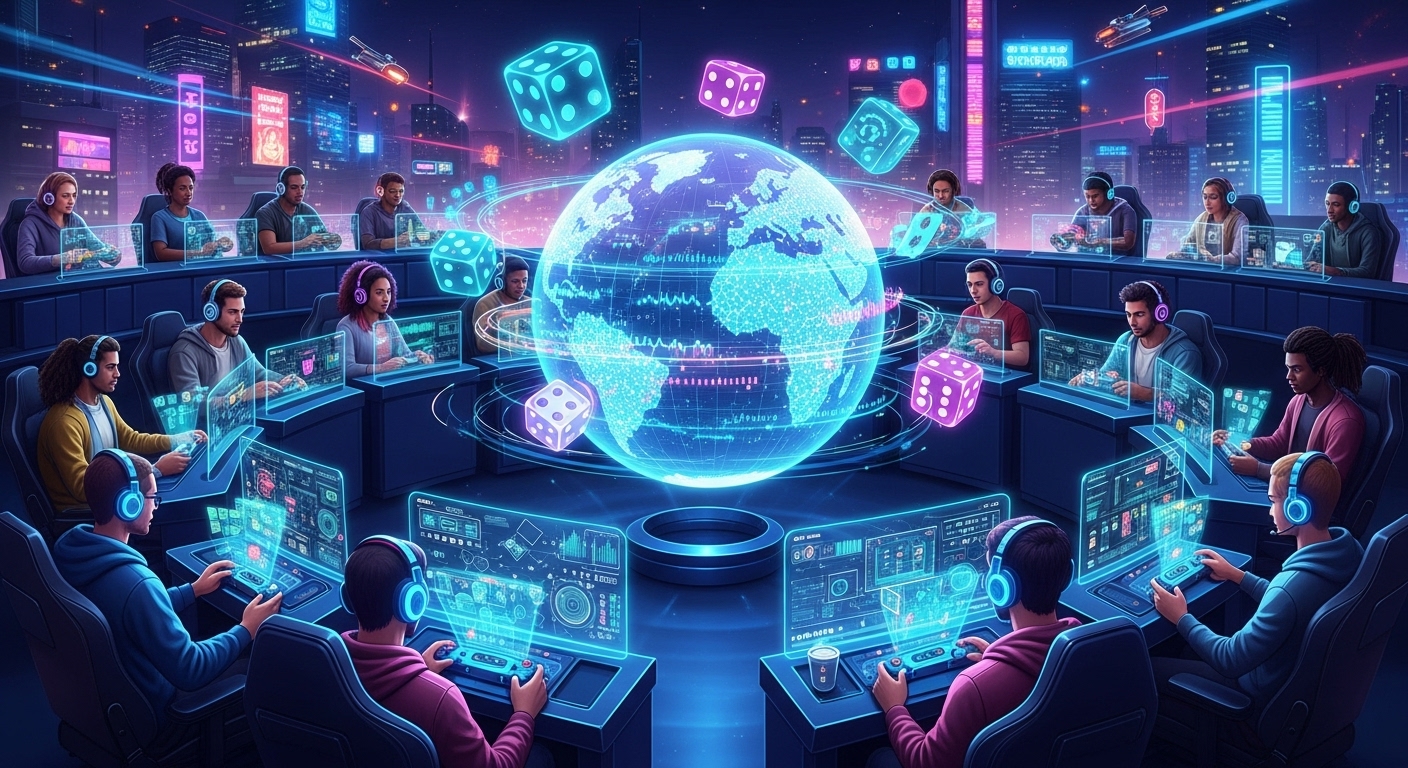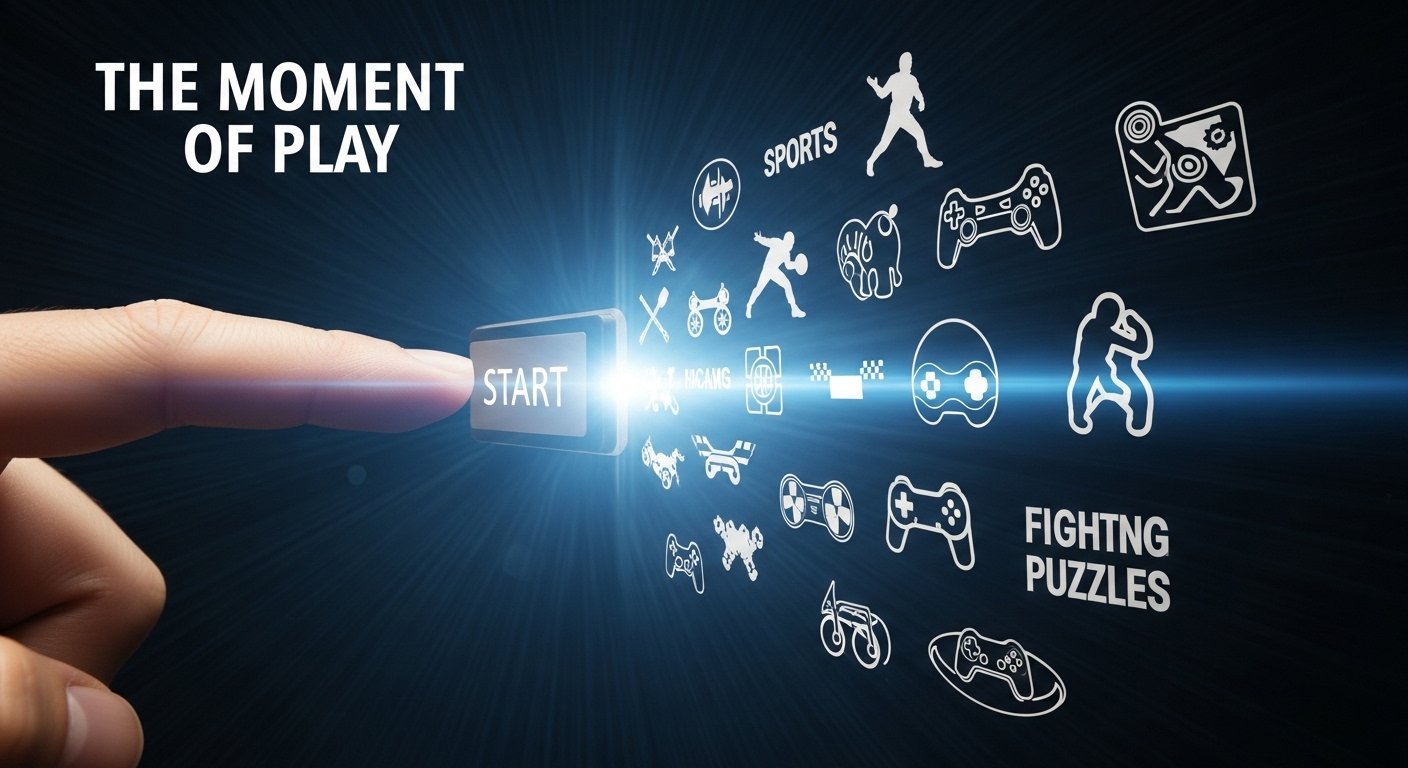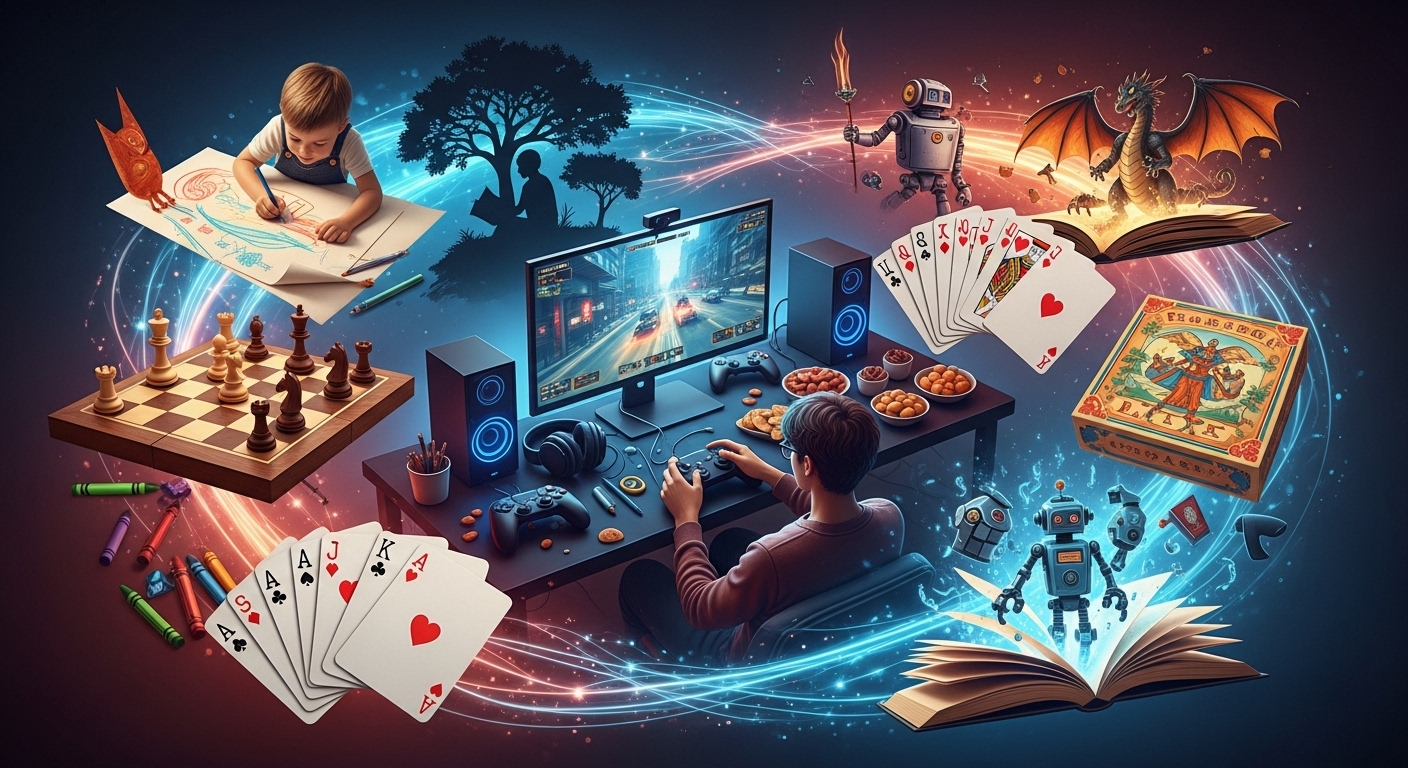Games have been a part of human civilization for thousands of years, serving as a source of entertainment, education, and even survival. From ancient board games carved into stone to the high-tech virtual worlds of today, gaming has evolved into a vast universe of creativity and competition. It is not merely a pastime—it is an art form, a science, and a social phenomenon that connects people across cultures and generations. In this blog, we will explore the fascinating world of games, their evolution, their impact on human life, and the reasons why they continue to captivate billions of people worldwide.
The Ancient Origins of Games
The history of games dates back to the earliest human societies. Archaeological findings reveal that ancient civilizations such as Egypt, Mesopotamia, and China had their own forms of games long before modern technology existed. The game of Senet, discovered in Egyptian tombs, is believed to be one of the oldest known board games, played over 5,000 years ago. It was not just a form of amusement but also carried religious and spiritual symbolism.
In ancient China, Go (known as Weiqi) was created over 2,500 years ago and remains one of the most complex strategy games ever designed. Its simplicity in rules and depth in strategy made it a favorite among scholars and warriors. Similarly, in India, the game of Chaturanga laid the foundation for what would later become modern chess—a game that symbolizes intelligence, patience, and foresight.
These early games reflected the values, beliefs, and intellect of the societies that created them. They were often linked to war, religion, or philosophy, serving as tools for both entertainment and education.
The Rise of Board and Tabletop Games
As societies grew more structured, so did their games. The Middle Ages in Europe saw the rise of chess, backgammon, and card games. These games were played in courts, taverns, and homes, crossing boundaries of class and culture. Board and tabletop games became social activities, fostering interaction and strategic thinking.
By the 19th and 20th centuries, mass production allowed board games to become accessible to the general public. Games like Monopoly, Scrabble, and Risk became household names, teaching concepts of economy, vocabulary, and world domination in fun and engaging ways. Families gathered around tables, friends challenged each other, and laughter filled living rooms as dice rolled and tokens moved across colorful boards.
These games were not just about winning or losing—they taught life lessons. Players learned to negotiate, to think critically, and to understand that sometimes, luck plays a role in life’s outcomes. Board games created memories that transcended generations.
The Digital Revolution: Birth of Video Games
The invention of computers and electronic technology in the mid-20th century sparked a revolution in gaming. The 1950s and 60s saw the birth of the first digital games, often created as experiments by computer scientists. Games like “Spacewar!” and “Tennis for Two” introduced the concept of interactive entertainment through machines.
The 1970s marked the beginning of the video game industry as we know it. Arcade games such as “Pong,” “Pac-Man,” and “Space Invaders” captured the hearts of millions. People lined up in gaming arcades, inserting coins into machines for a few minutes of joy and competition. These games were simple in design but incredibly addictive, creating a new culture around high scores and friendly rivalries.
The 1980s and 90s saw the rise of home gaming consoles. Companies like Nintendo, Sega, and later Sony changed the landscape of entertainment forever. Iconic characters such as Mario, Sonic, and Link became cultural symbols, representing creativity, adventure, and the joy of discovery. Gaming had officially entered the living room, becoming a shared experience for families and friends.
The Evolution of Game Design and Storytelling
As technology advanced, so did the art of game design. Early games focused on mechanics and challenge, but modern games began to focus on narrative and emotion. Developers started crafting stories that rivaled films and novels in depth and complexity.
Games like “The Legend of Zelda,” “Final Fantasy,” and “Metal Gear Solid” introduced storytelling as a central component of gameplay. Players were no longer just controlling characters—they were living through epic adventures, making decisions that shaped outcomes, and connecting emotionally with virtual worlds.
The rise of 3D graphics, realistic physics, and cinematic soundtracks transformed gaming into a full-fledged art form. The boundaries between reality and imagination blurred. Each new generation of consoles brought greater power, allowing developers to create experiences that were visually stunning and emotionally resonant.
The Role of Online Gaming
The introduction of the internet changed gaming forever. Multiplayer online games allowed players from different parts of the world to connect, compete, and collaborate in real-time. This was the dawn of a new era—the age of online gaming.
Games like “World of Warcraft,” “Counter-Strike,” and “Call of Duty” created massive communities of players. These online worlds became social spaces where friendships were formed, teams were built, and rivalries ignited. Players could talk, trade, and even build virtual lives together.
The concept of the “gamer” evolved. It was no longer an individual hobby—it became a global culture. Competitive gaming, or esports, emerged as a professional field, with players earning fame and fortune by mastering their craft. Major tournaments filled stadiums and attracted millions of online viewers, blurring the lines between traditional sports and digital competition.
The Emotional and Psychological Power of Games
Beyond entertainment, games have a deep emotional and psychological impact on players. They offer an escape from reality, a way to relieve stress, and a platform for self-expression. Many games encourage problem-solving, creativity, and teamwork, helping players develop valuable life skills.
Story-driven games often allow players to experience empathy by stepping into the shoes of different characters. Titles like “The Last of Us,” “Life is Strange,” and “Journey” explore themes of love, loss, morality, and identity in ways that resonate deeply with audiences. These experiences prove that games are not just about competition—they are about connection.
Moreover, educational games have become powerful tools for learning. They can teach subjects like mathematics, history, and science in ways that are interactive and engaging. Games are increasingly being used in schools and workplaces to enhance learning and collaboration.
The Artistic Side of Gaming
Many people now view games as a legitimate form of art. The blend of visual design, music, storytelling, and interactivity makes games one of the most comprehensive artistic mediums. Each game is the result of the collaboration of designers, artists, writers, programmers, and musicians, all working toward a shared creative vision.
Games like “Shadow of the Colossus,” “Journey,” and “Gris” are often praised for their artistic beauty. Their minimalist storytelling and breathtaking visuals evoke strong emotions, much like paintings or films. The artistry of games continues to push boundaries, proving that creativity has no limits in digital worlds.
The Role of Technology in Shaping Modern Gaming
The evolution of technology has continually redefined the gaming experience. From pixelated graphics to hyper-realistic visuals, from 8-bit soundtracks to orchestral scores, technology has expanded the possibilities of what games can achieve.
Virtual Reality (VR) and Augmented Reality (AR) are recent advancements that have brought gaming into a new dimension. Players can now physically immerse themselves in virtual worlds, moving, touching, and interacting in ways that were once unimaginable. Games like VR adventure simulators and AR-based titles demonstrate that the future of gaming lies in full sensory engagement.
Artificial Intelligence (AI) also plays a vital role in modern gaming. AI-powered characters react intelligently to player actions, creating dynamic and unpredictable gameplay. Procedural generation allows developers to create vast, ever-changing worlds, ensuring that no two gaming experiences are exactly the same.
The Social and Cultural Influence of Games
Gaming has grown beyond a personal hobby—it has become a cultural force. It influences music, fashion, film, and even language. Phrases and memes from games have entered everyday conversation, and popular gaming characters have become global icons.
Streaming platforms have further expanded gaming culture. Millions of people watch others play games for entertainment, learning strategies, or simply enjoying the shared experience. This has created new opportunities for gamers to become influencers, content creators, and community leaders.
Games also have the power to bring people together across borders. Online communities often transcend nationality, race, and language, fostering global friendships and collaboration. In many ways, gaming represents a modern form of unity and shared human experience.
The Business and Industry of Games
The gaming industry is now one of the most profitable entertainment sectors in the world, surpassing even film and music. With billions of players and countless platforms, it has become a global economic powerhouse.
Game development studios, independent creators, and publishers all contribute to this vast ecosystem. Mobile gaming, in particular, has exploded in popularity, allowing people to play anytime and anywhere. Casual games, puzzle games, and role-playing adventures dominate app stores, making gaming more accessible than ever before.
Despite its growth, the industry also faces challenges—such as issues of inclusivity, fair labor practices, and the balance between monetization and player experience. However, these challenges continue to inspire dialogue and innovation within the gaming community.
The Future of Games
As we look ahead, the future of gaming appears limitless. Emerging technologies such as cloud gaming, virtual reality, and artificial intelligence promise to redefine how games are created and experienced. Cloud gaming will make high-quality games accessible without the need for powerful hardware, allowing anyone with an internet connection to enjoy the latest titles.
Developers are also exploring the potential of adaptive storytelling, where games respond to players’ emotions and choices in real-time. Imagine a world where a game changes its tone, dialogue, and outcomes based on your mood or behavior—this is no longer science fiction but a rapidly approaching reality.
Furthermore, as games become more integrated into education, therapy, and social interaction, their role in society will continue to expand. The next generation of players and developers will shape a world where games are not just entertainment but a universal language of creativity and connection.
Conclusion
Games are more than a way to pass the time—they are a reflection of human imagination, innovation, and emotion. From the carved stones of ancient civilizations to the digital landscapes of today, gaming has accompanied humanity through every stage of cultural evolution. It teaches us, challenges us, and connects us in ways that no other medium can.
Whether we play to compete, to learn, or simply to escape into another world, games remind us of one essential truth: the joy of play is universal. It transcends age, language, and background. As technology continues to evolve, so will the art and magic of gaming, guiding us into new realms of creativity and discovery for generations to come.




